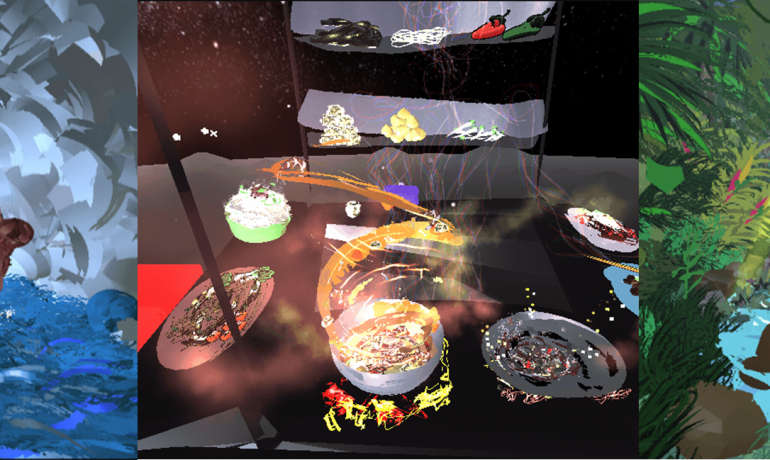The local arts scene is thriving with new blood and inventive artistic forms. Here are three upcoming artists who are keeping alive Malaysia’s traditional cultural elements through the work of reconceptualisation.
By Yee Heng Yeh
George Town may be designated as a UNESCO World Heritage Site since 2008, but it doesn’t necessarily make the fight to preserve our local cultural heritage any easier. In particular, when it comes to the arts, it may often seem like a perpetual uphill battle to capture public interest and secure funding. There’s no lack of trying, however, and we’ve rounded up three Penang-based artists who have spearheaded successful projects that ambitiously infuses technology and modernity into their mission of preserving cultural history.
Ysabel Loh: Digital Art
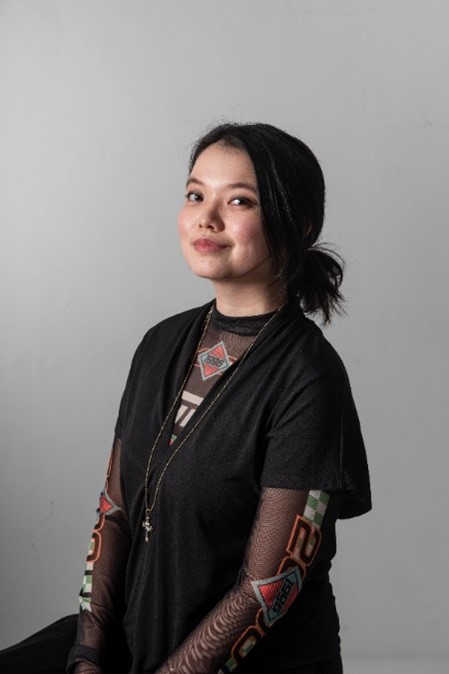
Photo courtesy of Ysabel Loh.
Ysabel Loh is a multidisciplinary artist whose work combines local heritage with speculative elements, often engaging with notions of the Malaysian cultural identity. Her mediums include video game prototypes, interactive films, and VR art experiences, as she believes the digital is the next step to evolving the traditional. She is working towards becoming an independent digital artist (VR).
One of Loh’s most recent works is The Pulau I Call Home (reviewed here in PAD, and available here), a VR space where audiences can explore different 3D rooms hand-painted in VR. By integrating interviews with Penangites, Pulau weaves memories of local haunts with comments on Penang’s art culture, asking the timeless question of why people stay—or leave. Furthermore, Loh has collaborated with Alliance Francoise de Penang on Exchanging Memoirs, a VR immersive art collection showcasing the organisation’s founding and growth, earlier in November last year.
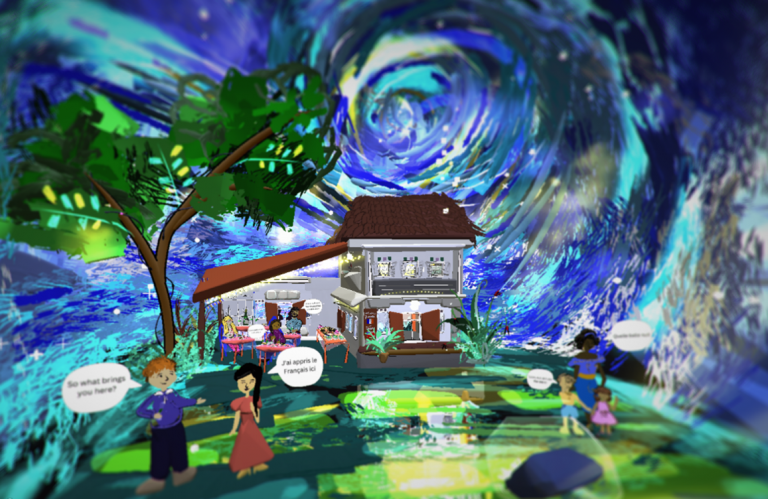
Snapshot from Exchanging Memoirs. Photo courtesy of Ysabel Loh.
Loh’s upcoming projects include a re-imagining of Penang’s heritage nooks and crannies into AR and VR fantasy worlds. She also hopes to enter more residencies abroad, aiming to explore how Malaysia may support digital art culture through festivals and mentorships in the future. As if that isn’t enough, she’s also acting in Melur the Musical by Liver & Lung Productions at PJPAC this February! And subsequently, Dabble Dabble Jer Collective, an emerging production company based in Penang that Loh co-founded, will be launching their experimental theatre show, Burden of Proof, in November.
To stay updated, follow Loh’s YouTube or Instagram. You can also email her or check out her portfolio. Tickets to Melur are available here, and you can learn more about Burden of Proof on Instagram.
Ilya Rusaidi: Traditional Jikey Theatre
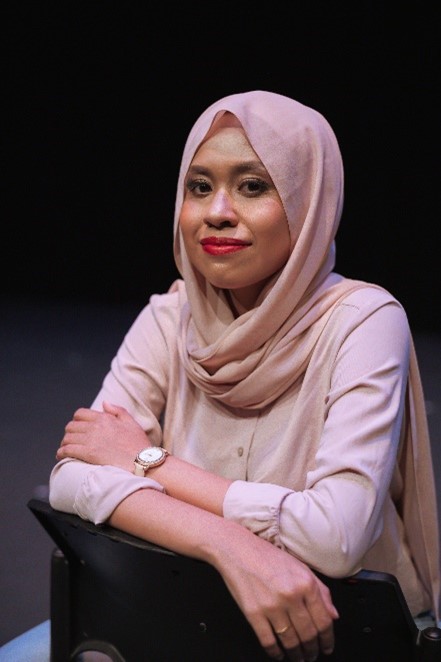
Photo courtesy of Ilya Rusaidi.
Ilya Rusaidi is the founder and producer of MyPenang Creative, and is currently in the process of completing her master’s degree in Jikey at USM, Penang. Jikey is a traditional Malay folk theatre that incorporates dance, music, improvisation, and topical humour. It often borrows from local legends and features archetypal characters who may be identified by particular musical elements.
Ilya’s interest in traditional theatre began in childhood, thanks to her father, Rusaidi Ramli, who is also a theatre practitioner. Jikey has roots in Perlis, where she was born, but she did not work with this theatrical form until 2013, when she managed a traditional theatre arts project. During that time, she became involved in the practical aspects of staging a Jikey performance and met with Jikey practitioners and activists from Perlis.
Four years later, Ilya directed a Jikey production—Jikey Adventures of Prince Sadao—for the first time, while her latest show was staged in October 2022, titled Jikey Aladdin and Pelita Ajaib. In some sense, things have come full circle: Jikey Aladdin is the brainchild of her father, and she was assisted by Jikey activists such as Siti Salwani, Man Violin, and Masmee. The show was also supported by MOTAC, Jabatan Kebudayaan dan Kesenian Negara (JKKN) Pulau Pinang, and Triple I Production House, and notably had a cast of various ethnicities and nationalities: Malay, Chinese, Indian, Nigerian, and Bangladeshi.
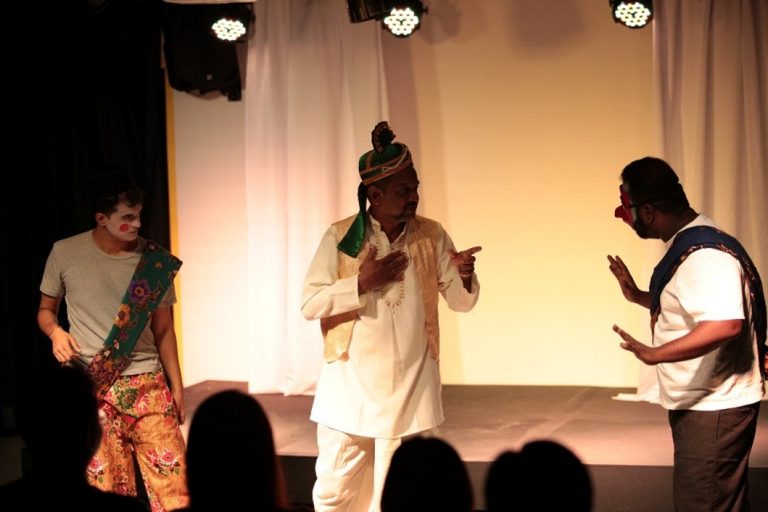
Performance of Jikey Aladdin. Photo courtesy of Ilya Rusaidi.
Ilya plans to stage the next Jikey show on a large scale in July 2023 in Penang. With this, she aims to introduce Jikey to all Malaysians across racial boundaries, so that the art form will be “inherited” by popular consciousness and not become extinct.
For future updates, follow Ilya on Facebook. Alternatively, visit MyPenang Creative’s Facebook or Instagram.
Kimy.A: Animatronic Wayang Kulit
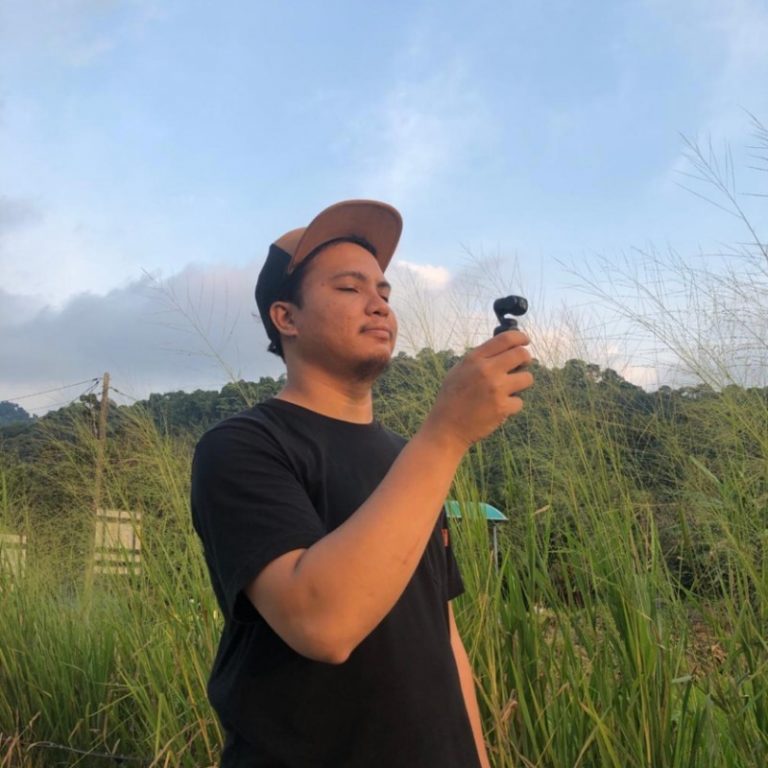
Photo courtesy of Kimy.A.
Ahnaf Hakimi Ahmad, better known by his moniker Kimy.A, has loved tinkering with electronics since elementary school—as a kid, he would even take apart household items for their electronic components, which he’d then use to develop projects. Today, Kimy may work as a multimedia lecturer, but he also runs electronic and visual arts projects on the side while serving as a fabricator for artists, including himself.
One of these projects is his Animatronic Wayang Kulit that utilises robotics in the staging of Malaysia’s iconic shadow-puppetry. Where traditional puppets are handcrafted from leather, Kimy uses 3D printing to create well-known characters alongside new ones. And instead of a team comprising a tok dalang (puppet master), musicians, and technicians, Animatronic Wayang Kulit uses mechanical equipment and computer programming to manipulate the puppets. This makes the art more accessible, as the costs and time involved in training personnel and performing the traditional way can be quite prohibitive. With robotics, performances can be staged automatically across various locations.
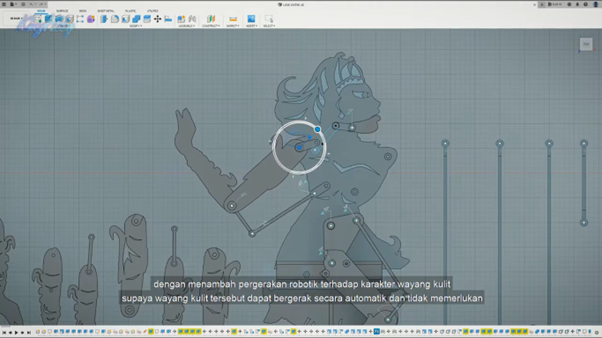
Still from Kimy’s video explaining his process. Photo courtesy of Kimy.A.
The success of this innovation is evident in the interest it has attracted—Animatronic Wayang Kulit has received support from CENDANA, MyCreative Ventures, and PRISMA, and has been exhibited in USM, Gurney Plaza, and even beyond Penang, such as in Kuala Lumpur and Kelantan. Visitors were able to enjoy the puppetry, but also go behind the scenes and observe the robotic movements and automatic control systems. A Wayang Kulit Workshop was also held in conjunction with the exhibition that saw participants making their own puppet-characters, encouraging further interest in this traditional art.
Kimy.A is currently in talks to stage another exhibition this month—follow him on his Instagram to receive updates, or watch this playlist to learn more. For more information on his other projects, visit Kognitif Lab’s Instagram or website!
Exhibition of Wayang Kulit Animatronik at Gurney Plaza, Penang
In the works of these upcoming artists, a clear common thread is their intention to promote traditional cultures and stories—yet this is also supported by an understanding that the answer to reviving heritage is not in rigid codifying or fossilising, but to breathe new life into it and make it relevant, all the while employing whatever technological advances there are at our disposal. Knowing that these artists and more are out there, it’s not hard to feel hopeful about the state of the arts in Penang; for the next year, at least, or even the foreseeable future.
Yee Heng Yeh is a writer and translator. His work is featured on The KITA! Podcast, adda, Strange Horizons, Nutmag, Nashville Review, and Guernica. He is on Twitter @HengYeh42.
Cover photo: snapshots from The Pulau I Call Home. Courtesy of Ysabel Loh.

